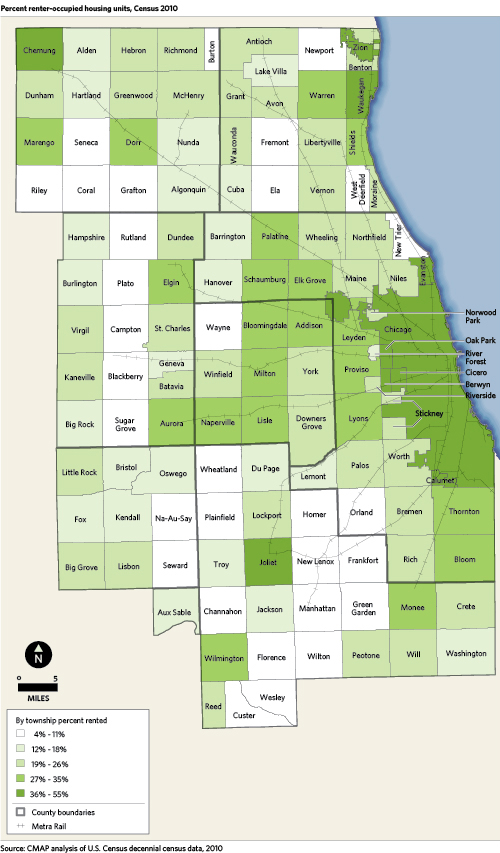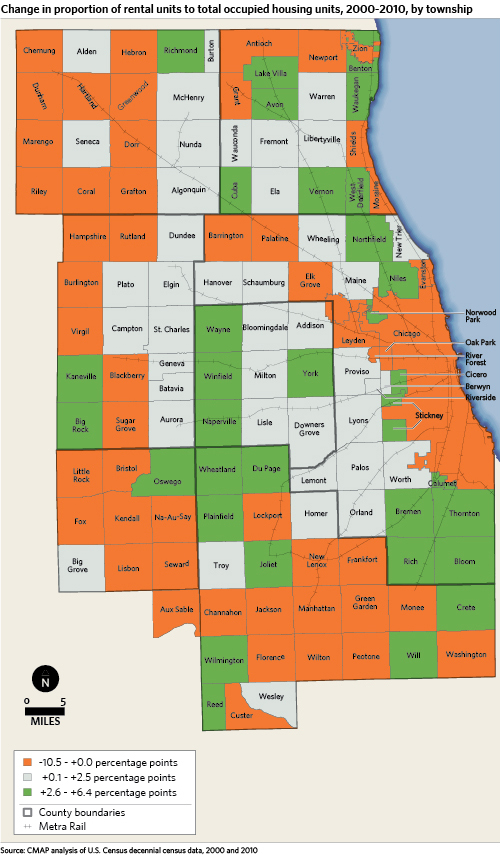GO TO 2040 acknowledges that "livability" requires a range of housing options, including a balance of both rental and owner-occupied housing. According to 2010 data just released today from the U.S. Census Bureau, the region has added 138,161 new owner-occupied units but only 10,493 new renter-occupied units; in other words, renter-occupied housing accounted for only 7.6 percent of all new occupied housing units in the region since 2000. This observation suggests that the overall housing market in the region has become less balanced over time. The City of Chicago experienced a net decrease in renter-occupied units over the past ten years, losing 21,064 renter-occupied units over the past ten years.
In all, growth in housing units follows the overall trends in population growth in the region, with communities on the outer edge of the region growing quickly. However, renter-occupied housing remains concentrated in dense, old central areas, and represents a declining share of the region's total occupied housing stock. GO TO 2040 emphasizes that the spatial balance between jobs and housing is an important policy issue to consider. Affordable rental housing is often quite far from job centers, many of which are becoming more dispersed throughout the region. This land use pattern may reduce the ability of lower-income people to participate in the workforce, and also cause problems for businesses that do not have full access to the region's labor pool.
According to the 2010 Census, the Chicago region contains 3,377,190 housing units, of which 3,092,325 (91.6 percent) are occupied and 284,865 (8.4 percent) are vacant. Sixty-five percent of total units are located in Cook County, with 35 percent in the City of Chicago and 29 percent in suburban Cook. The distribution of housing units corresponds to the distribution of population.
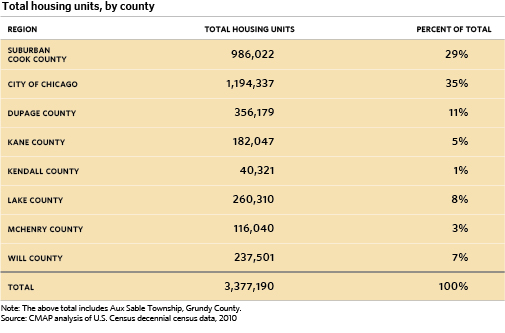
Of the region's total occupied units, 2,025,801 (65.5 percent) are owned by their occupants, while 1,066,524 (34.5 percent) are rented. Rental units are concentrated in the denser, older municipalities of the region: Chicago, Joliet, and Waukegan. (Click on the map for a larger pop-up version.)
In the City of Chicago, rental units account for 55 percent of all occupied units, compared to 34 percent of all occupied units for the region as a whole. They also account for roughly a quarter of occupied housing units in suburban Cook, DuPage, Kane, and Lake Counties, and less than a fifth of total occupied housing units in Kendall, McHenry, and Will Counties.
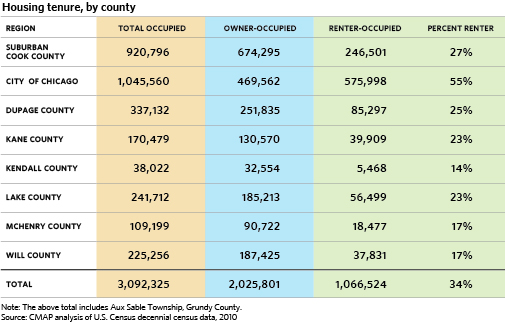
Changes Since 2000
Over the past decade, total housing units in the region grew by 9 percent, including a 7 percent growth in owner-occupied units and a 3 percent growth in renter-occupied units. (Vacant units, both for sale and for rent, account for the remaining growth in units; see relevant Policy Update.) These aggregate numbers mask great variability across the region. For example, total housing units in Kendall County grew by 107 percent. Kendall County had a relatively small housing base in 2000; more populous areas such as suburban Cook and DuPage Counties experienced more modest 5 and 6 percent growth in total housing units. Percentage growth in renter-occupied units exceeded that of owner-occupied units in suburban Cook, DuPage, Lake, and McHenry Counties, while the opposite held true in the City of Chicago, Kane, Kendall, and Will Counties. The following table provides an overview of housing units in the region, by county.
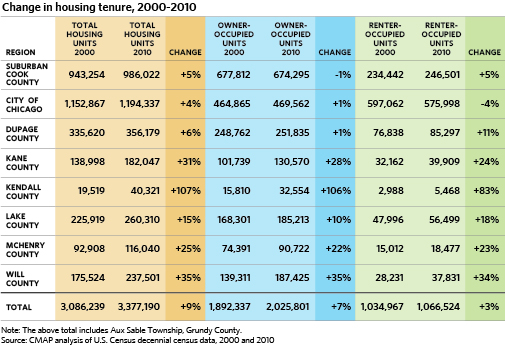
As discussed above, within counties there is great variability in the distribution of renter-occupied housing. Differences in the growth of owner-occupied housing and renter-occupied housing in many parts of the region have changed this balance in the housing market. The following map provides an overview of the change in proportion of renter-occupied of total occupied housing units, by township. (Click to see a larger pop-up version of the map.)
Chicago, several of the inner-ring suburbs, as well as many outer suburbs had proportionately fewer occupied rental units in 2010 than in 2000; in other words, the growth of owner-occupied housing outstripped that of renter-occupied housing. This changing balance was particularly visible in Kendall County, where six of the nine townships experienced a decline in the proportion of renter-occupied housing units of more than 3.5 percentage points. These townships already had relatively lower rates of renter- versus owner-occupied housing in 2000. However, renter-occupied housing made up a greater proportion of occupied housing in 2010 than in 2000 in many other areas of the region including all townships in DuPage County, southern Cook County, and many other townships in the collar counties.
